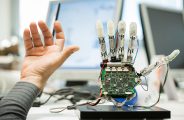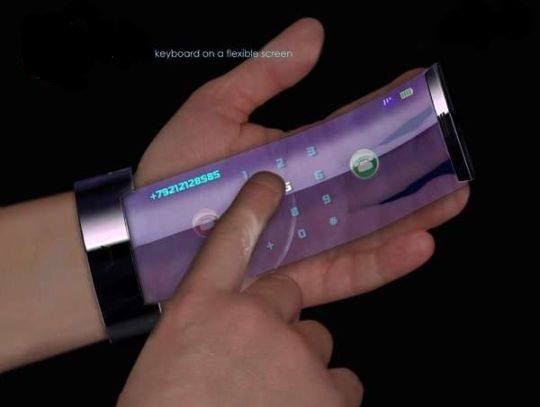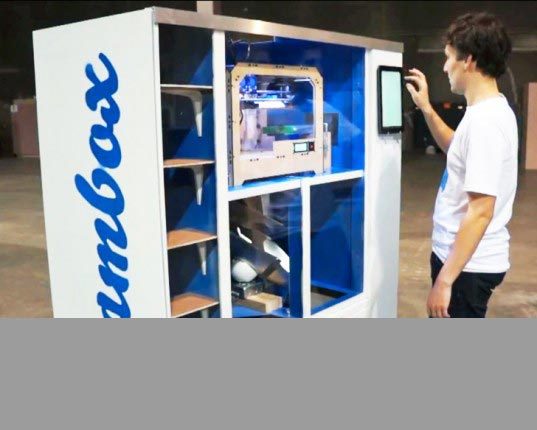When All Other Treatments Fail, Doctors Looking To Just Regrow The Organ
When physicians run out of treatment options, they look to an emerging field known as bioengineering for solutions to their patients’ ailments. Specialized scientists apply engineering principles to biological systems, opening up the possibility of creating new human tissue, organs, blood and even visual corneas. Waiting lists for organ transplants continue to be lengthy so the race to save lives with bioengineered body parts is on. Here’s a look at some of the most notable achievements body part regeneration.
Skin

Image: Fraunhofer Institute for Interfacial Engineering and Biotechnology
Producing small amounts of artificial skin to graft onto patients and use for toxicity testing has been possible for years. Human skin cells are cultivated in the lab and then embedded in a collagen scaffold. In 2011, the Fraunhofer Institute for Interfacial Engineering and Biotechnology introduced a system that can rapidly manufacture two-layer artificial skin models. Their Tissue Factory has the capacity to make 5,000 skin sheets in a month.
Ear

Image: Frank Wojciechowski/Princeton University
Reproducing 3D biological structures, particularly the complex human ear, presents significant challenges for bioengineers. A team at Princeton University, led by Associate Professor of Mechanical and Aerospace Engineering Michael McAlpine, used 3D printing technology to make a functional ear from calf cells and electronic materials. The ear that debuted in May 2013 is not a simple replacement — it can pick up radio frequencies well beyond the range that human ears normally detect.
Bladder
Surgeon Anthony Atala directs the Wake Forest Institute for Regenerative Medicine and is known for growing new human cells, tissues and organs — particularly ones that advance urology. Atala and his team’s bioengineered bladders succeeded in clinical trials. The bladders were constructed from patients’ cells that were grown over two months on a biodegradable scaffold and then implanted. Patients included children with spina bifida who risked kidney failure. It’s been several years since then and the results are positive. “These constructs appear to be doing well as patients get older and grow,” Atala told The NIH Record.
Blood Vessels

Image: Massachusetts General Hospital/PNAS
Being able to make blood vessels in the lab from a patient’s own cells could mean better treatments for cardiovascular disease, kidney disease and diabetes. In 2011, the head of California-based Cytograft Tissue Engineering reported progress in a study where three end-stage kidney disease patients were implanted with blood vessels bioengineered in the lab. After eight months the grafts continued to work well, easing access to dialysis. Then, this month, a team at Massachusetts General Hospital found a way to bring mature vascular cells back to an early, stem-like state. They generated long-lasting blood vessels in living mice.
Heart

Image: Massachusetts General Hospital/OTT Lab
Artificial heart devices have been surgically implanted since the 1980s, but no device has been able to replace the human heart as effectively as a healthy biological one. After all, a human heart pumps 35 million times in a single year. Recently scientists have made advances in adding more biological material to artificial heart devices. In May the French company Carmat prepared to test an artificial device containing cow heart tissue. At Massachusetts General Hospital, surgeon Harald C. Ott and his team are working on a bioartificial heart scaffold while MIT researchers recently printed functional heart tissue from sheep cells.
Liver

Image: Wake Forest University Baptist Medical Center
Bioengineers are working on it, but the liver is one of the largest, most challenging organs to recreate. In 2010 bioengineers at Wake Forest University Baptist Medical Center grew miniature livers in the lab using decellularized animal livers for the structure and human cells. This month, a team from the Yokohama City University Graduate School of Medicine published results of a study where they reprogrammed human adult skin cells, added other cell types, and got them to grow into early-stage liver “buds.” Currently the scientists can produce about 100 of them, but the study’s lead author Takanori Takebe told The Wall Street Journal that even a partial liver would require tens of thousands.
Trachea

Image: Harvard Apparatus Regenerative Technology
In April, after an international team of surgeons spent nine hours operating on her at Children’s Hospital of Illinois in Peoria, 32-month old Hannah Warren became the youngest patient to ever receive a bioengineered organ. Scientists had made a windpipe for her using her own bone marrow cells. Born without a trachea, she needed help breathing, eating, drinking and talking. Harvard Bioscience created the custom scaffold and bioreactor for the experimental procedure. Sadly Hannah died on July 7 due to complications from a more recent surgery on her esophagus. Despite the high risks, bioengineers say they will continue to move ahead.
Back Discs

Image: Robby Bowles
When a ruptured or degenerating disc causes chronic back pain, treatment is limited. At worst, patients undergo surgery to fuse vertebrae together and then have limited flexibility. Over the past several years artificial discs have emerged as an alternative, but they can wear out as they work. In 2011, a research team from Cornell University bioengineered implants using gel and collagen seeded with rat cells that were then successfully placed into rat spines. This summer Duke bioengineers took things further, coming up with a gel mixture they think can help regenerate tissue when injected into the space between discs.
Intestines

Image: EPFL
Little by little, bioengineered intestines are being grown in the lab to diagnose digestive disorders and to help patients born without a piece of intestine. In 2011, Cornell biological and environmental engineering assistant professor John March began collaborating with Pittsburgh-based pediatric surgeon David Hackam on a small artificial intestine using collagen and stem cells. Then last year in Switzerland, EPFL professor Martin Gijs led a project in the Laboratory of Microsystems to create a miniature intestinal wall from cultured epithelial cells and electronics called NutriChip to identify foods that cause inflammation. Scientists at Harvard’s Wyss Institute also made a “gut-on-a chip” to mimic the real thing using intestinal cells in a tiny silicon polymer device.
Kidney
One in 10 American adults will have some level of chronic kidney disease, according to the Centers for Disease Control and Prevention. Currently around 600,000 patients in the U.S. have chronic kidney failure. Most rely on dialysis while a fraction of them actually get transplants. Scientists from the University of California, San Francisco are on a mission to create a sophisticated artificial kidney device made with human kidney cells, silicon nanofilters and powered by blood pressure. The project, led by UCSF nephrologist William Fissell and bioengineering professor Shuvo Roy, aims to begin testing the kidney device in 2017.
Do you agree with these scientific breakthroughs? Your Thoughts
via Mash






























































